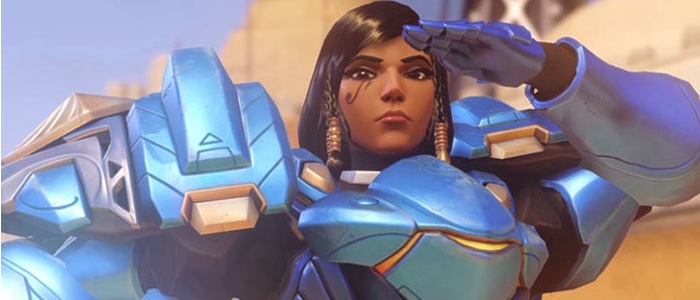In Adventurous Side Quest: Mimips 11 part 3, the nefarious band of ne’er-do-wells must rid the basement of the Three-Piece Suit of squatting duergar and their crocodile collection. The standout combatant was the crocodile wrangler, a whip-wielding masked menace with fear magic. With good reason. He was created by a creative team responsible for one of the most successful action figure lines of all time.
My Crocodile Wrangler was based on GI Joe’s Croc Master. The party was looking to prove themselves in an encounter, I quickly found duergar to be a CR appropriate encounter with some fun abilities, but I wanted to add a unique spin to it. Croc Master came to mind and the encounter came to be.
Why?
As I’ve established before, my prepped sessions are far less entertaining for everyone at the table, myself most of all, than my improvised sessions. And one of the easiest ways to improvise is by drawing inspiration from your experiences, including the pop cultural experiences that left a personal impression.
Available Skin
During the combat, Perram mentions how dangerous this particular duergar looks. That’s because I made a Roll20 pawn out of Croc Master art. Even if I had not, if my players had asked for a description I could have described him based on my decades of familiarity with his design. Or I could have quickly Googled some art. Instead of painting a picture with my imagination, I can paint it with my memory. Traditionally, my imagination is stronger than my memory, but visuals are an exception.
Established Details
Beyond the look, I can bring a character to life by referencing details about them that imply depth. In the original GI Joe comics, Croc Master was not recruited to Cobra. He showed up on Cobra island and assumed responsibility for perimeter security. It didn’t come up in the session, but if the group tried diplomacy, I could have established something similar with the Three Piece Suit duergar, that the one with the crocodiles isn’t their leader, and they don’t even like him, but they aren’t about to argue with the guy with the crocodiles.
In this case, the inspiration never had a voice actor*, but normally calling on pop culture, especially a cartoon, informs how I portray the NPC. For example, the yak farmer from Explore & Encounter: KD Tries 2e, Farmer Bloom was modeled after Apple Bloom from My Little Pony. And remember, your voice doesn’t need to match the character you are impersonating. Having a template for an NPC’s voice helps you keep it consistent.
Field Tested
Instead of Croc Master, some crocodiles, and some other duergar, I could have created something whole cloth for the combat. Off the top of my head, a pack of suspiciously cagey weasels have been sneaking through the casino grabbing the shiniest chips. When confronted, they mob up and form a small humanoid shape. Maybe that’s as cool as I think it is, and maybe it will survive player scrutiny, but I won’t know how solid this composite weasel idea stands until someone tries to poke holes in it.
Touchstones
In Croc Master’s case, I didn’t call attention to the reference. Yes, I used the character’s art, but I did so assuming he would not be recognized. However, pop culture can be used to quickly explain an idea. Had I run the composite weasel encounter, I could have said it formed together like Voltron, but instead of giant metal man made out of robot cats, it’s a short furry man made out of meat weasels. More abstractly, I could have called it a weaselly Devastator. Pop culture provides us with an imagery-rich lexicon of reminders of pass times past, and piling fun memories onto the present game being played is just a good time sammich.
How?
Now that I’ve convinced you your campaign needs as many Cobra operatives as you can fit in it, how do you do it on the fly?
Association
I mentioned this on the Dice Geeks RPG Podcast I recently appeared on, but I was as prepared to move onto a circus act audition as I was to move onto combat when the Mimips 11 cast was working out how they would infiltrate the Three Piece Suit. Once it was established that their plan was to prove themselves in combat, I needed a challenge that was:
- Level appropriate;
- Not especially challenging;
- Memorable;
- Out of the book.
I used the Archives of Nethys’ monster filter find two good candidates: duergar and crocodiles. To paraphrase advice Sean K Reynolds once gave for an RPG Superstars encounter design round: It’s easy to throw two related monsters into an encounter that makes sense. It’s impressive to throw two unrelated monsters into an encounter that makes sense. Aiming to impress my players, I needed a connection point between duergar and crocodiles that was memorable and out of the book.
Hence, Croc Master.
Reskin
I like making monsters, but 2e lacks the handy chart from the back of every Bestiary that I used to improvise 1e monsters. Even with the monster creation rules (which I don’t believe I had at the time), the recommended stats by CR aren’t as succinctly summarized. So the easiest solution was to reskin existing stats. In this case, I used the Duergar Taskmaster. Because each crocodile was its own creature, I didn’t have to worry about swapping out abilities to grant anima companions. If this was an adventure I was writing for publication (more on that later), I would need to spend mechanics justifying their relationship. This being a minor encounter, I didn’t feel guilty loosely handling some less consequential mechanics. 2e’s less interactive mechanics mean I can do that without worry that a player might pull a mechanical Jenga piece out that topples my tower.
Evocation
Have you ever heard a movie described as “like X meets Y” where X and Y are other movies? Or “Like X, but Y” where X is another movie and Y is a plot element that’s been changed? That is not just how audiences describe movies, it is how movies are pitched. Spinning the familiar is like coding language to maximize the impact of every word.
Not only does this tool conveying your idea easier, it makes it easier to conjure up. Like Venom meets lycanthropy. Like The Fly meets The Blob. Like Voltron, but weasels. There is so much inspiration to mine just by taking two concepts that set the tone you’re looking for and then seeing what’s in the overlap.
Recontextualize
I think about pop culture a lot, and I enjoy thought experiments like filtering absurd pop culture ideas through realistic lenses. For a good example of this, see every episode of Robot Chicken.
In addition to the fun recontextualizing pop culture can provide, it is also a useful tool for us, my fellow GMs. We all know Batman is a popular character concept for PCs but imagine him as an villainous rival for your party. Throwing a seemingly endless supply of teenage acrobat minions at them. Somehow always informed about the party’s abilities and equipped to counter them. Bankrolled by a rich and influential member of society, whose butler have military training. File the serial number down enough and your players might totally miss that they are being hounded by arguably the most recognizable modern pop culture icon.
But…
Beware, pop culture infusion can have some negative consequences. The most obvious is that it can derail your campaign. I used Croc Master in that encounter to save time, not to indulge in a GI Joe digression (which, even as the GM of actual play content, I would have had a hard time resisting if someone else initiated it). Similarly, as strongly as people can feel for the pop culture they like, they can have an equal and opposite reaction to the pop culture they dislike. It can be really deflating when a player follows “Wait, is this guy Batman,” up with the elongated groan of someone who has seen Thomas and Martha Wayne killed in crime alley once too many times.
Also, and I can’t stress this enough, pop culture thrives on the tabletop, but is problematic in published content. That isn’t to say pop culture has no room in published content, but much more care must be taken with how it is used. Having a character who throws a petrified bat he found in a Medusa cave is a bit much, even if you aren’t calling it a Batarang. The difference is the reaction you are trying to elicit. Pop culture at the table is fine, and it can get a knowing smile or chuckle in spite of themselves from your players. That’s fun, the purpose of playing the game. Whereas the purpose of publishing is sharing how original you can be, so much so you thought of something no one else thought of and it’s worth paying you money for.
Conclusion
Just like you don’t have to design every monster from the ground up, you don’t need to reinvent the wheel for every design, personality, or memorable moment. You can learn from pop culture. It can be your tool for better story telling, faster idea conception, and smoother GMing.
And now you know.
*As a 1987 release, Croc Master just missed making the GI Joe The Movie cut (which featured a number of 1987 good guys but virtually no 1987 bad guys), and he was off the shelf by the 1989 Dic revival of the GI Joe series. He never got his own commercial, only briefly animated for a commercial for GI Joe Motorized Action Packs. Even though the character has received new action figures over the years, he never made it into tie-in animation.
Every two weeks, Ryan Costello uses his experience as a Game Master, infused with popular culture references, to share his thoughts on best GMing practices to help his fellow GMs. Often deconstructing conventional wisdom and oft repeated GMing advice, he reminds his fellow GMs that different players play the game in different ways, and for different reasons.






